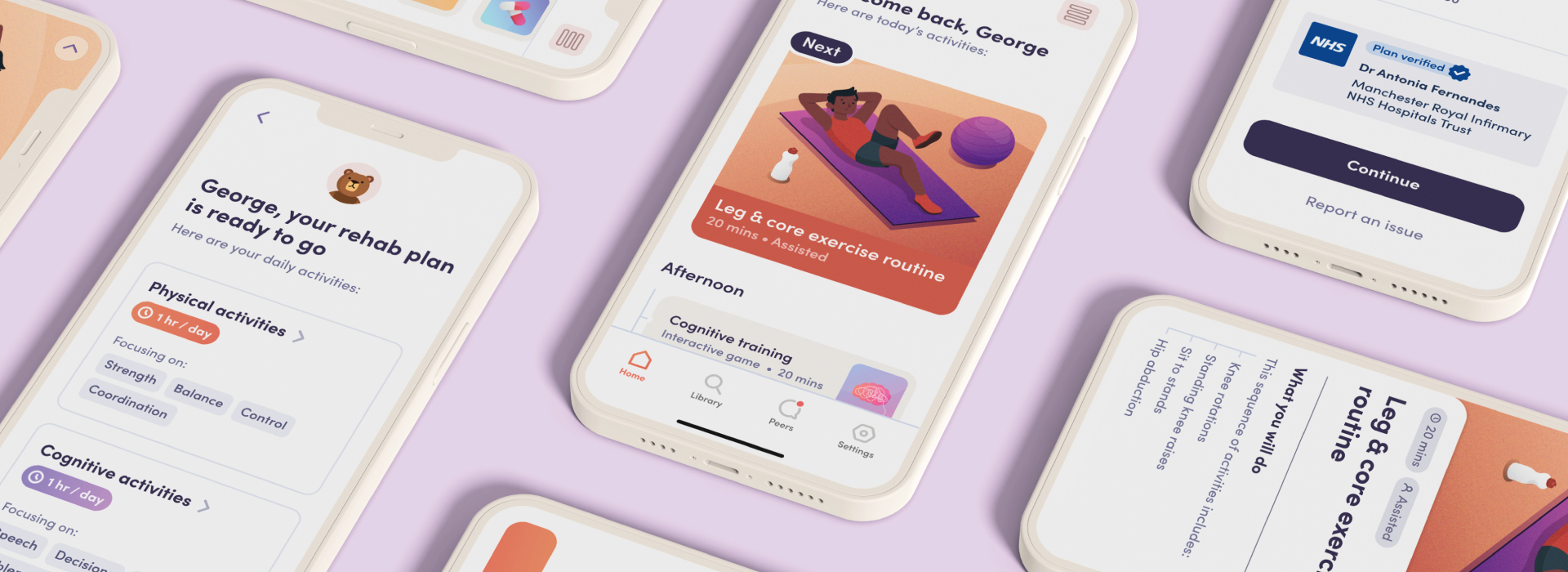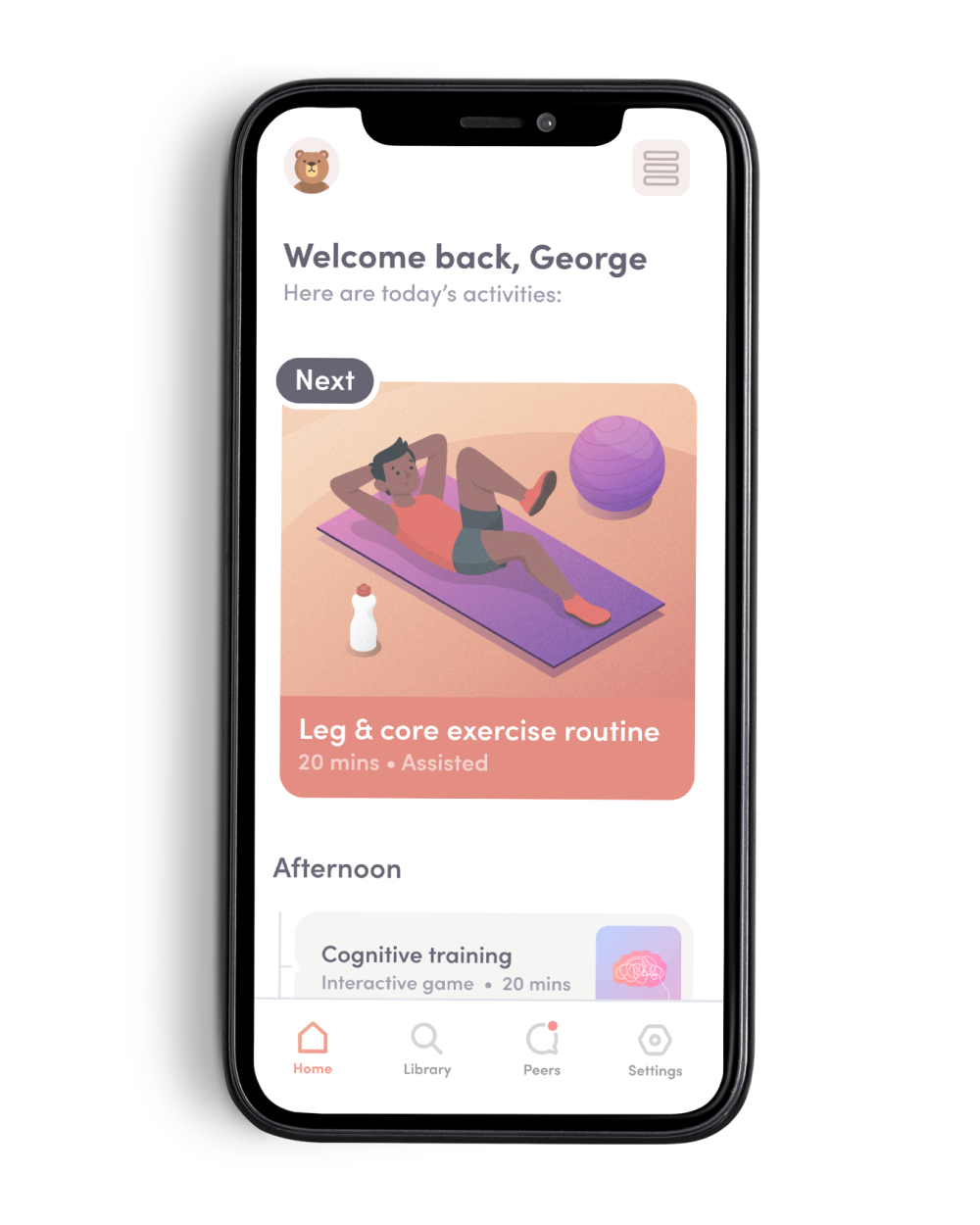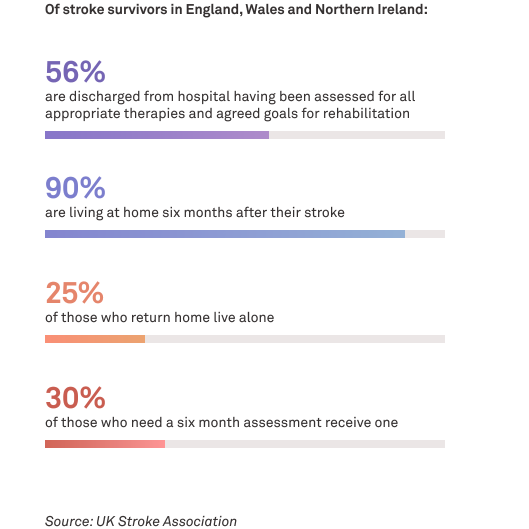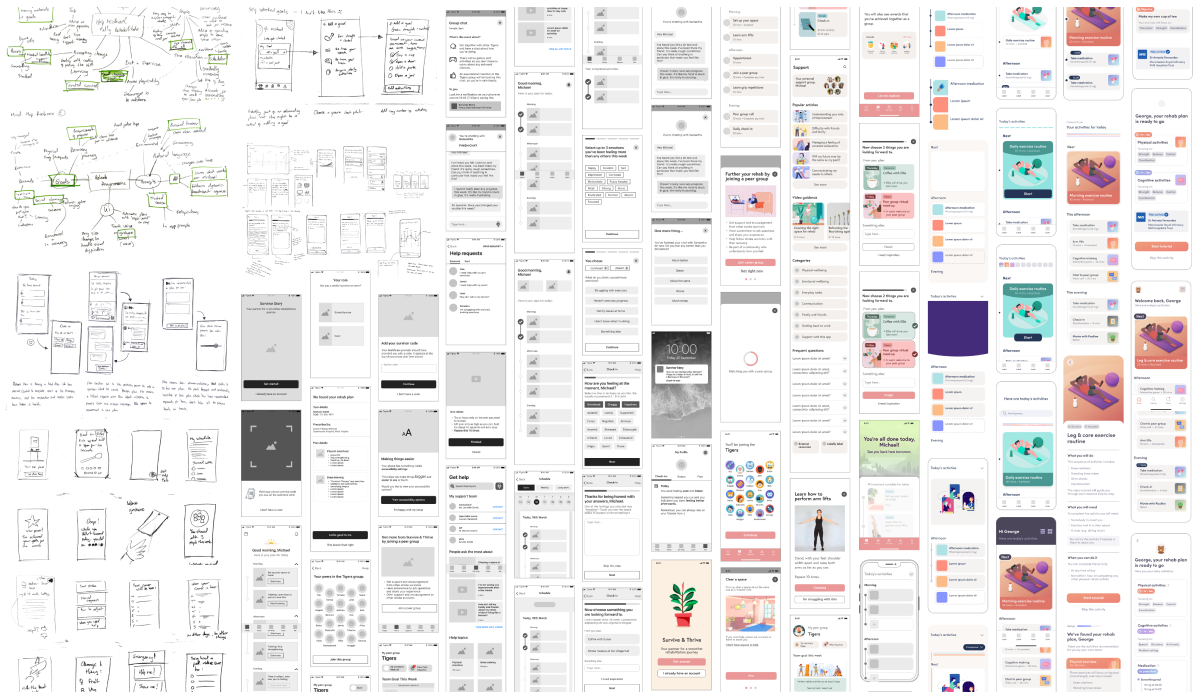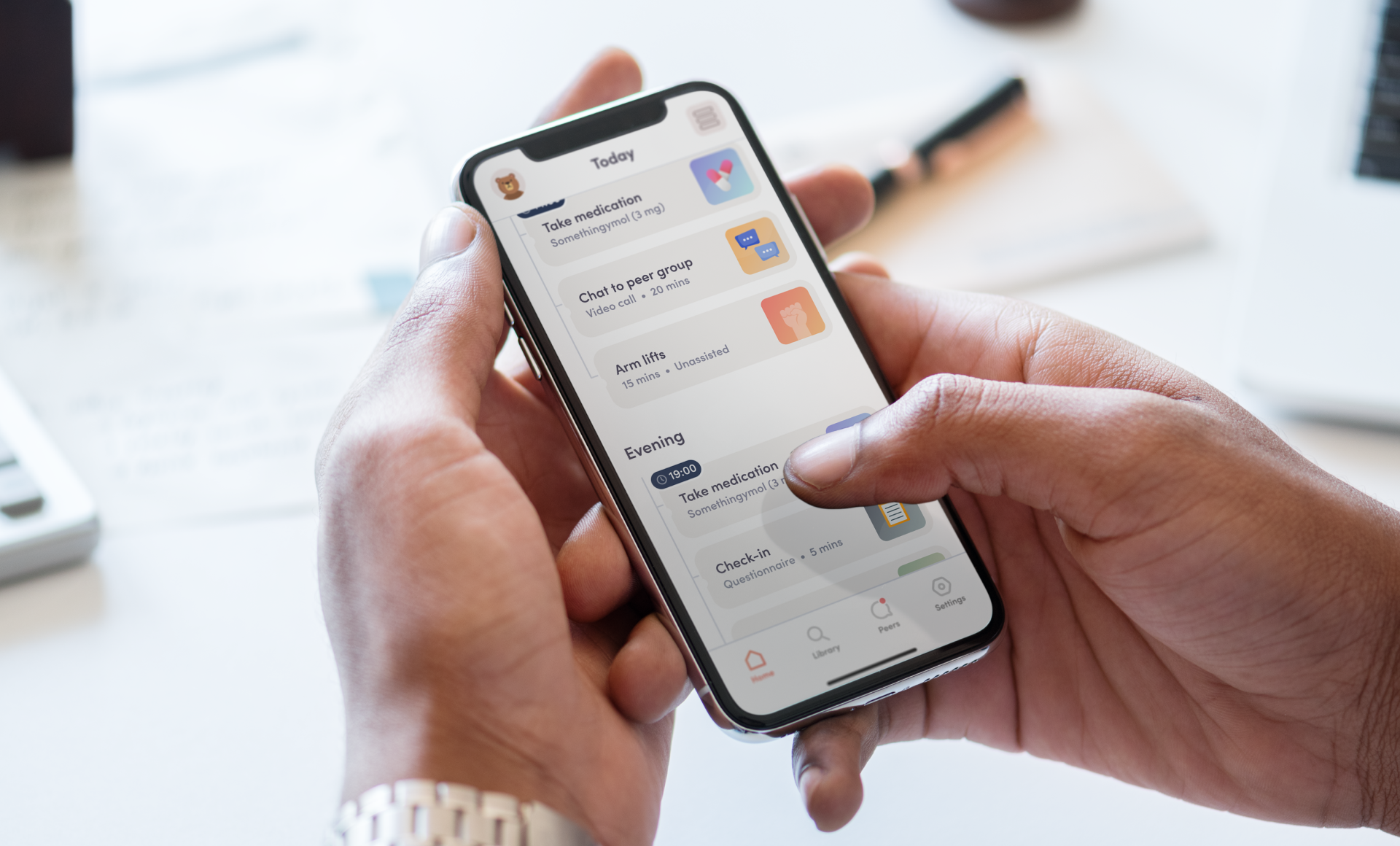Digital health solution to help stroke rehabilitation
Challenge
Our digital health experts conceptualized a patient-facing digital rehabilitation solution to help maximize recovery after a stroke.
Approach
We analyzed the care pathways of stroke survivors and found significant unmet needs in the area of post-acute care. The COM-B model was used in defining several behavioral interventions to aid stroke recovery, which were combined over many iterations into a single digital health solution via an app. This prototype was evaluated with stroke survivors to assess its potential impact and overall user experience.
Outcome
Our digital health solution aimed to empower stroke survivors by enabling a greater degree of control over their own rehabilitation. The prototype was positively received by participants. The target group believed this service would have aided their own stroke recovery.
